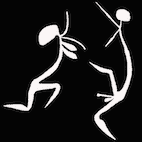Birrikidji Gumana – Yirrkala Bark Painter and Yolŋu Cultural Leader
Birrikidji Gumana also called Birrikitji Gumana (Yirritja moiety) was one of the most distinguished bark painters and ceremonial leaders of Arnhem Land in the 20th century. A revered ŋurrudawalaŋu (warrior) and senior djirrikay (ceremonial authority), he was also the father of acclaimed artist Gawirrin Gumana. His work bridges the disciplines of art, law, and diplomacy, standing at the intersection of Yolŋu cultural continuity and the historic assertion of Aboriginal land rights. Birrikitji’s bark paintings are instantly recognisable for their refined integration of monochrome totemic figures, Macassan sailing vessels (prau), and the Dalwangu diamond pattern – an ancestral design with deep ceremonial and clan significance.
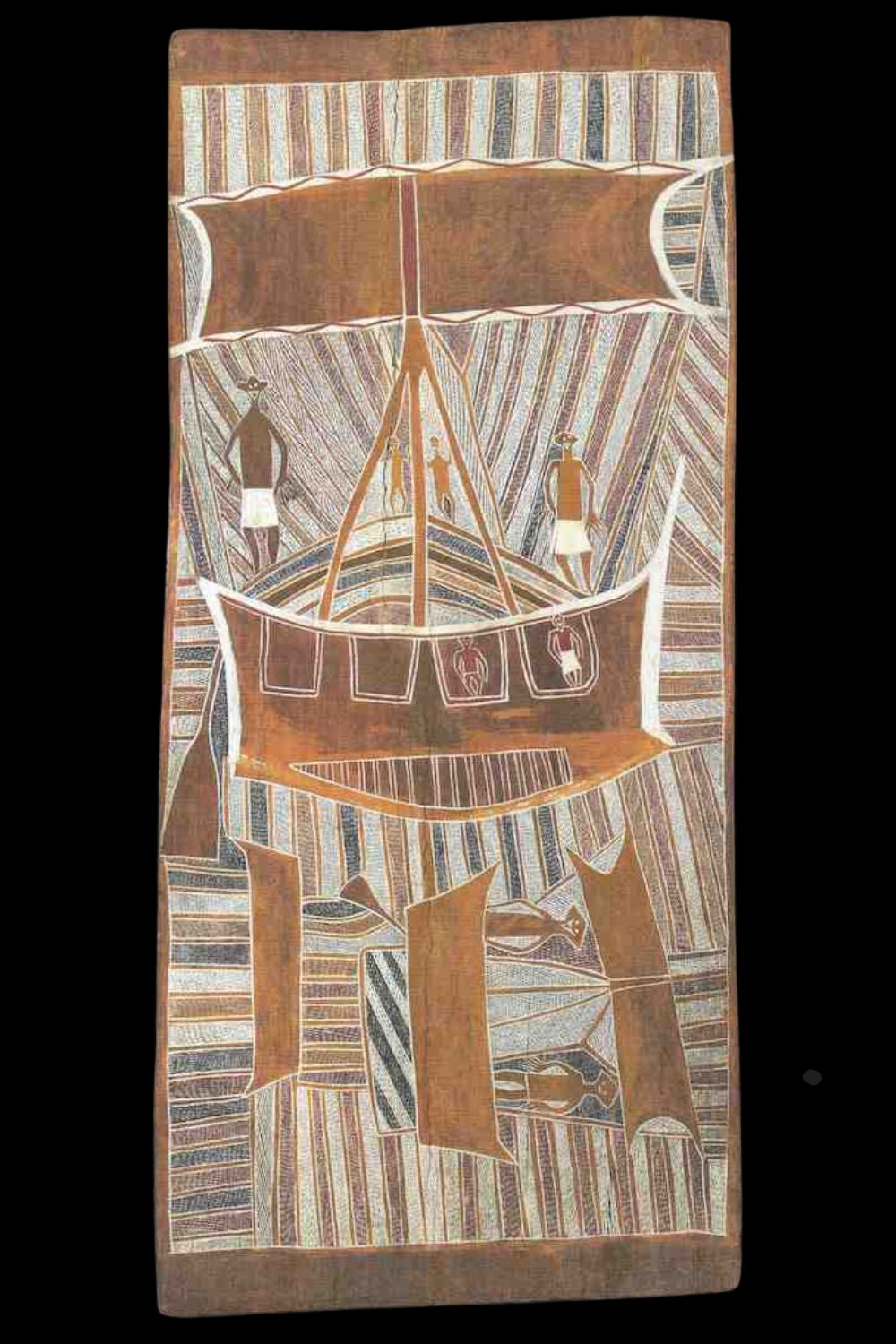
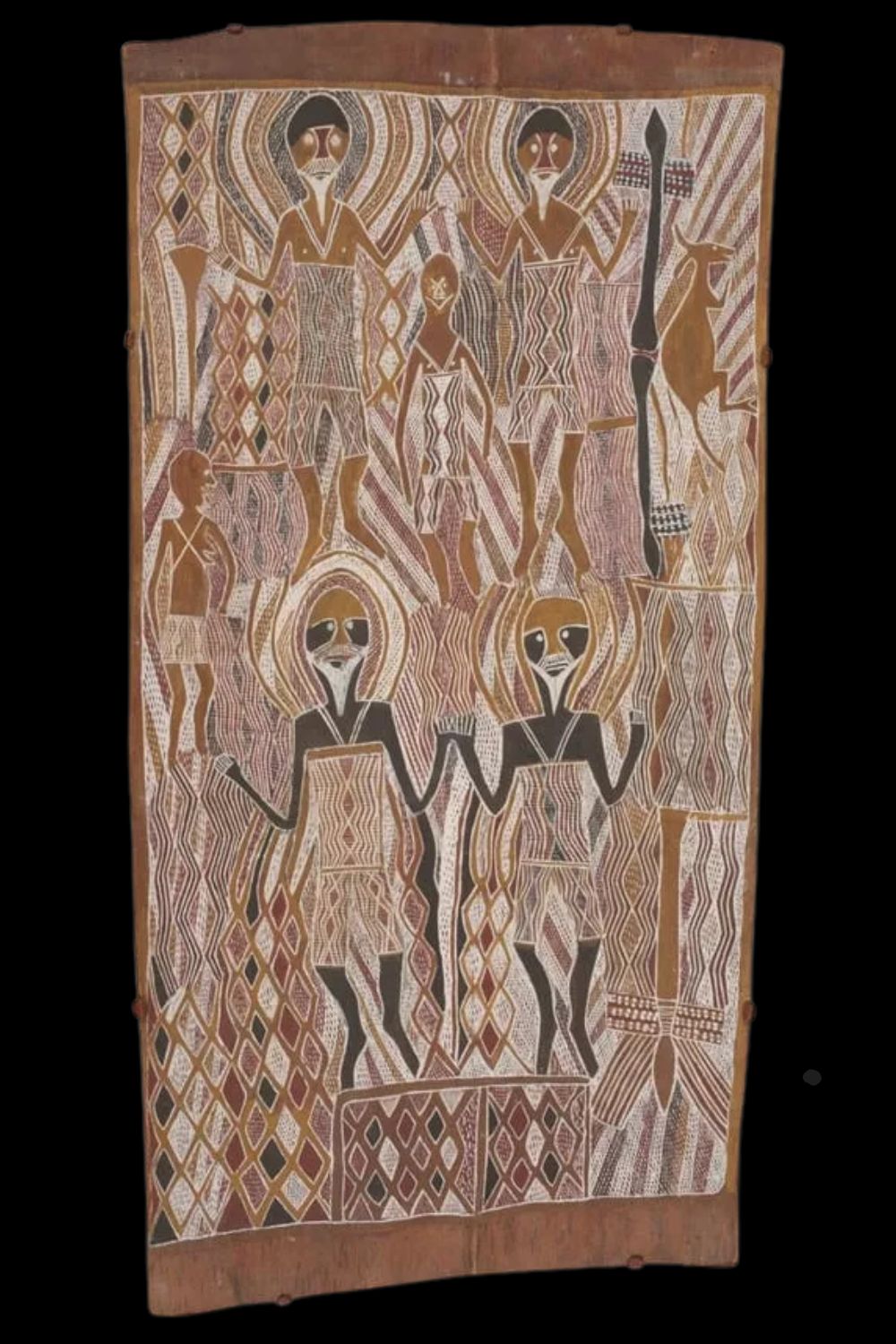
Identifying the Work of Birrikitji Gumana
Collectors and scholars often identify Birrikitji Gumana bark paintings by their commanding compositions: large, centralised figures or totemic animals framed by intricately painted rarrk (cross-hatching). His works frequently feature diamond-shaped stingrays, ingeniously incorporated into the rarrk grid, or depictions of Macassan praus complete with detailed crews, referencing centuries-old contact between Yolŋu and Makassan traders. These diamond motifs belong to the Dhaḻwaŋu clan of the Yirritja moiety and derive from the ancestral hero Laintjun, who emerged from the sea in the Dreaming with seafoam patterns across his body.
Laintjun brought with him the Yirritja totems, taught the painting of the diamond design, and distributed these sacred emblems among the Yirritja clans. The design encapsulates multiple layers of meaning – seafoam on Laintjun’s skin, the sacred honeycomb he consumed in the Arafura swamp, and the rippling water through the sticks of a fish trap – all of which Birrikitji conveyed with exceptional precision. He is also known to have created at least one finely carved and painted hardwood Aboriginal figure, further attesting to his versatility as a maker.
Birrikidji Gumana is also known to have carved and painted at least one hardwood Aboriginal Figure.
Biography and Cultural Legacy
Born in the early years of European expansion into Arnhem Land, Birrikitji Gumana witnessed both the upheaval and resilience of Yolŋu life. In 1911, he was the first to reach Gäṉgaṉ after the massacre of Yolŋu during a Ngärra ceremony, a defining moment that shaped his commitment to safeguarding Yolŋu law. From the 1940s, he painted for anthropologists Catherine and Ronald Berndt, and later for art dealer Jim Davidson, ensuring his works entered major public and private collections worldwide. His art reached national prominence through his contribution to the Yirrkala Church Panels in 1962 – monumental statements of Yolŋu land ownership – and later inclusion in the National Museum of Australia’s Old Masters exhibition (2014). A central witness in the landmark Milirrpum v Nabalco case of 1971, Birrikitji lived to see the passing of the Aboriginal Land Rights (Northern Territory) Act 1976. In the late 1970s, he re-established Gäṉgaṉ as a homeland for the Dhaḻwaŋu people with his sons Gawirriṉ Gumana and Yaŋgarriny Wunuŋmurra. Today, his works stand not only as masterpieces of Yirrkala bark painting but as enduring records of Yolŋu history, law, and ceremonial life.
Other Artists involved in the painting of the church panels include Mathaman and Narritjin and Mithinarri
Birrikidji is sometimes spelled as Birrikidja Gumana, Birrikitji Gumana or even Birrakitja Gumana.
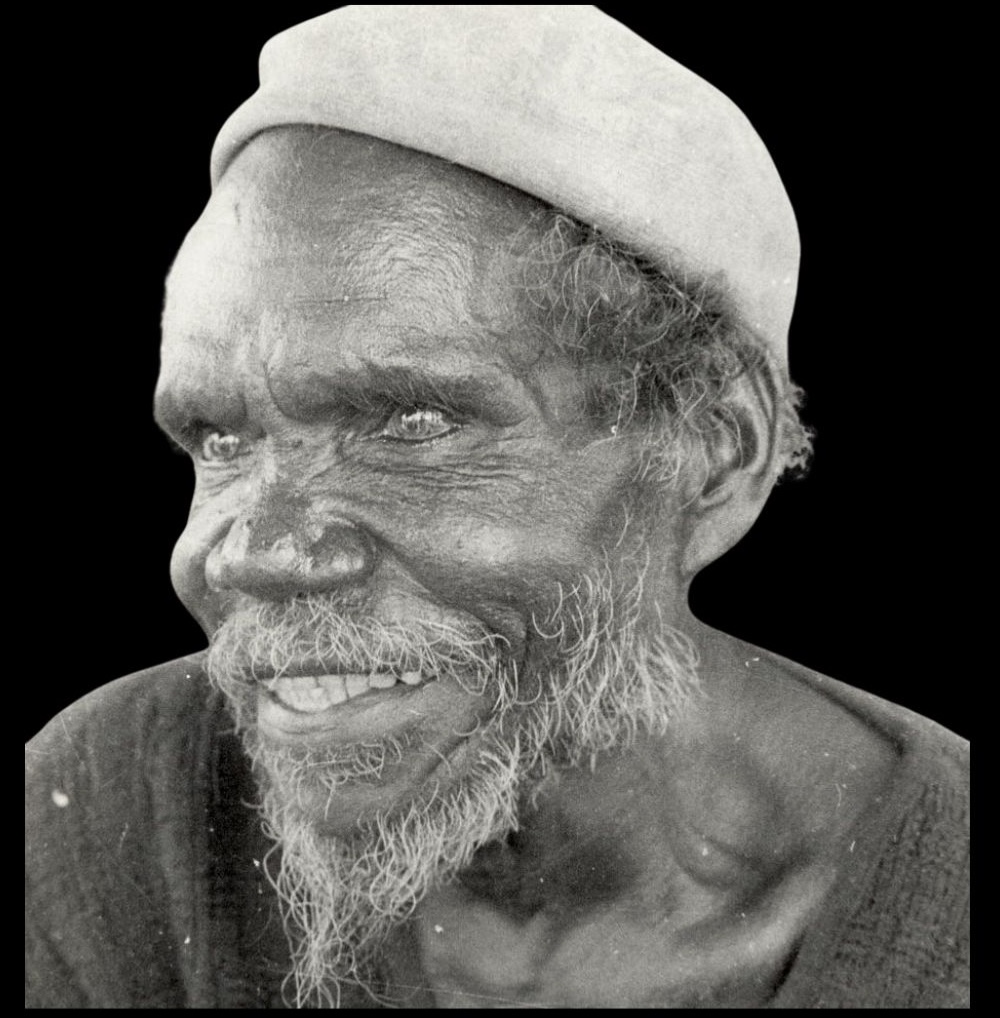
All images in this article are for educational purposes only.
This site may contain copyrighted material the use of which was not specified by the copyright owner.
Meaning of Birrikidji Gumana Artworks
Macassan Prau – Icon of Yolŋu Maritime History in Bark Painting
The Macassan prau (also spelled prau or perahu) occupies a unique place in the cultural and artistic heritage of Arnhem Land. These elegant sailing vessels, used by Makassan trepang (sea cucumber) traders from Sulawesi, were a common sight along the northern Australian coastline from at least the early 18th century until the early 20th century. For the Yolŋu people of north-east Arnhem Land, the arrival of the Macassan prau marked a period of sustained cross-cultural contact – a maritime exchange that brought new technologies, goods, and influences into Yolŋu life while also embedding itself deeply into ceremonial and artistic traditions.
In Aboriginal bark painting, the Macassan prau is more than a record of historical contact; it is a symbol of trade, diplomacy, and the interconnectedness of the Yolŋu world with the wider archipelago. Senior artists such as Birrikitji Gumana and other Yirrkala bark painters have depicted praus in meticulous detail – complete with their masts, lateen sails, rigging, and full crews – using natural earth pigments on stringybark. These works not only record the physical form of the vessels but also evoke the ceremonial narratives and ancestral dimensions associated with this period of contact.
The depiction of the Macassan prau in Yolŋu art often sits within a broader field of rarrk (crosshatching) and clan designs, visually integrating this foreign vessel into the sacred geometry of Yolŋu country. In the art market, authentic bark paintings featuring the Macassan prau are highly sought after, valued both for their beauty and for the unique maritime history they embody.
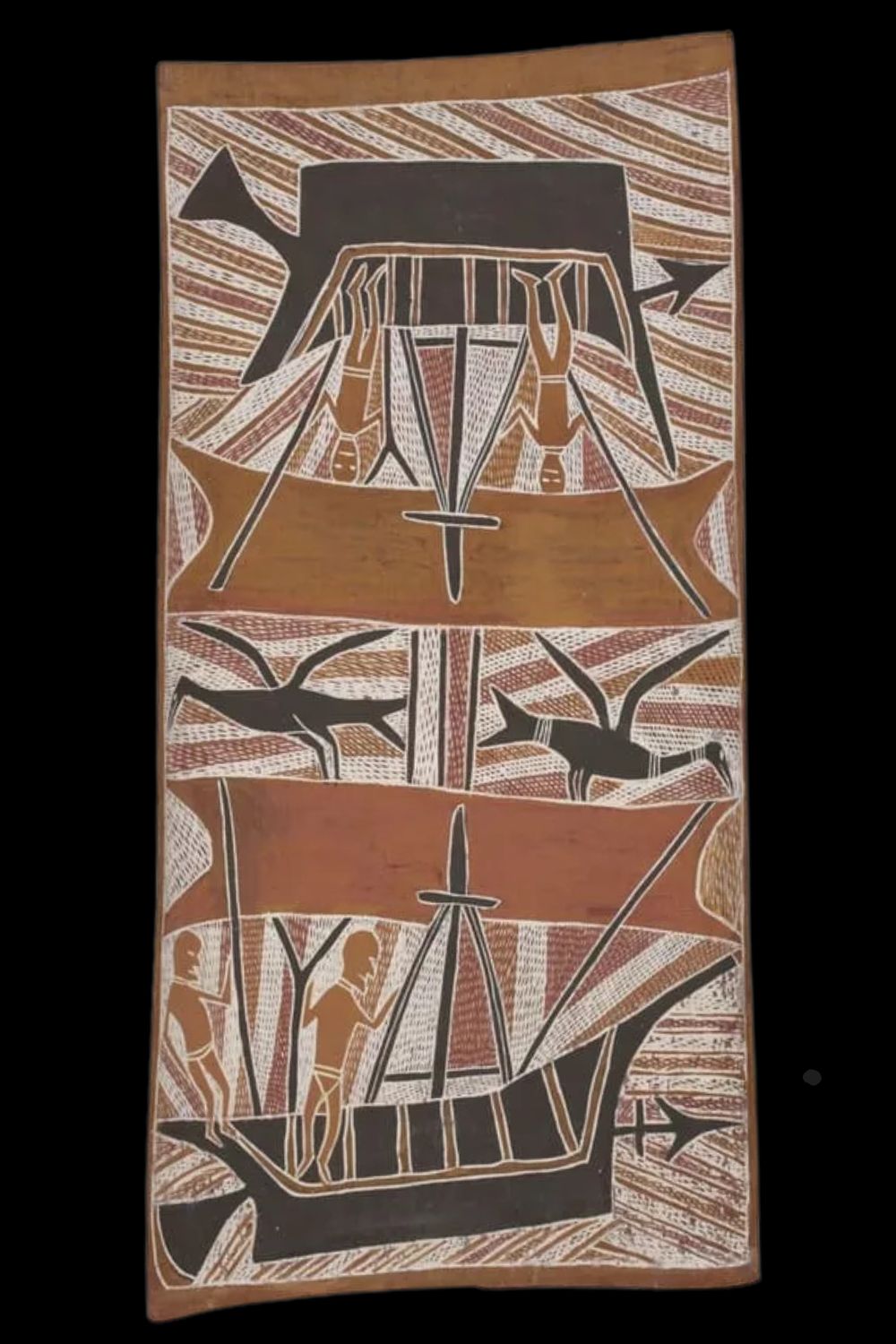
Laintjun: Yolŋu ancestral hero
The ancestral hero Laintjun came out of the sea in the Dreaming with the sea foam forming the diamond patterns on his body. Laintjun taught the Dalwangu Clan how to paint the diamond pattern and the meaning of them. When Laintjun first arrived from the sea as an ancestral spirit, he assumed a human form. He later searched the Arafura swamp and found and ate the “Sacred Honey Comb” and so became a spirit man. In time he became the greatest warrior and hunter in all Arnhem Land.
When he came out of the sea he brought with him all the Yirritja totems and distributed them to all the Yirritja Clans.

